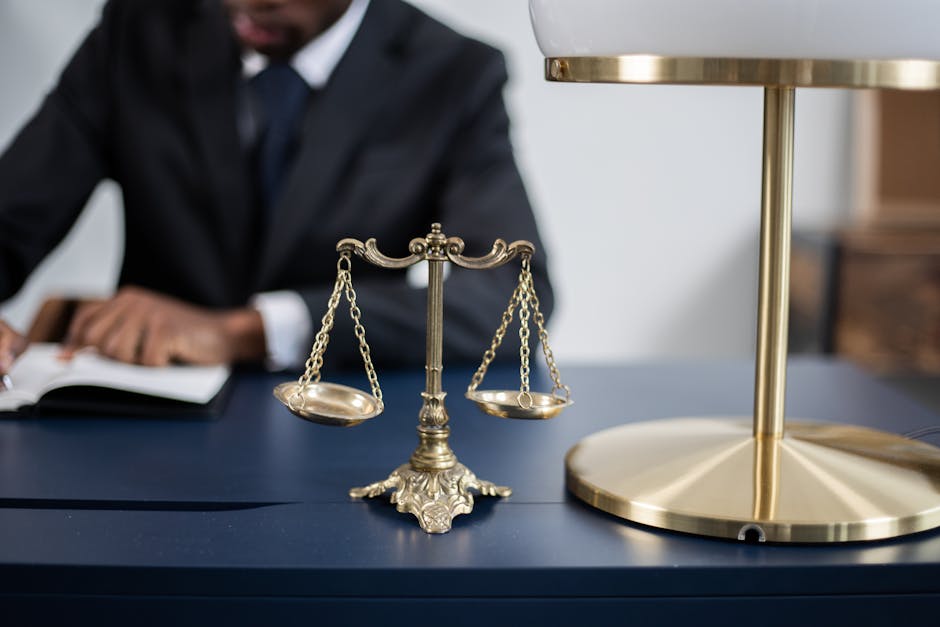The Law of Digital Ghosts: Navigating Post-Mortem Data Rights Now
In a world where our digital footprints can last even longer than our physical ones, understanding the rights and responsibilities surrounding post-mortem data management becomes critical. From social media profiles and online banking accounts to digital assets like cryptocurrencies and NFTs, the digital afterlife is something every internet user must grapple with.
As we move further into 2025, the legal landscape surrounding these digital legacies is evolving rapidly. With more people becoming aware of their digital possessions and how best to manage them posthumously, it's essential to know the implications and options available. This article dives deep into the complexities of post-mortem data management and how you can ensure your digital legacy is handled with care and intention.
What Are Digital Ghosts?
Digital ghosts refer to the trail of online presences we leave behind after death. This can include social media profiles, emails, cloud storage, digital currencies, and much more. According to estimates, over 35 million social media accounts belong to deceased individuals, and more individuals are generating digital assets every day. This phenomenon raises important legal questions: Who owns these digital spaces once a person passes away? What happens to the personal data contained within them?
Navigating these complexities requires an understanding of relevant laws, policies, and options tailored for post-mortem data management.
Digital Assets: A New Type of Inheritance
Digital assets are increasingly recognized as part of the estate. From invaluable collections of photos stored in the cloud to cryptocurrencies and NFTs, these aren't just simple data points; they're often significant parts of a person’s identity and legacy. Understanding what these assets are and how they can be inherited is crucial.
For instance, not all digital platforms have the same policies regarding the transfer of data after death. While some, like Facebook, allow users to designate a "legacy contact" to manage their accounts, others may restrict access, leading to confusion and frustration among survivors. You can read more on the differing approaches towards digital inheritance in this guide.
The Legal Framework Surrounding Digital Estates
One of the principal challenges in post-mortem data management is the absence of standardized laws governing digital assets. While the Uniform Fiduciaries Act (UFA) and various state laws provide frameworks for handling digital estates, there's still significant variance across jurisdictions.
Some states have adopted legislation expressly addressing digital assets, while others lag behind. This inconsistency creates obstacles for families trying to access a deceased loved one’s digital accounts. If you’re interested in understanding the legislative landscape of digital heirlooms, check out this article.
The Role of Privacy and Consent in Post-Mortem Data Management
Consent remains a fundamental principle when it comes to digital data. After someone passes away, issues of privacy can become complicated. What rights do heirs have concerning accessing their loved one’s accounts? What about consent in terms of data shared with third parties?
While family members may have a right to access certain information for estate settlement, they may also find obstacles when security protocols kick into high gear with digital accounts. To navigate this terrain, survivors must be informed and prepared to advocate for their rights.
Preparing for a Digital Afterlife: Actionable Steps

-
Create a Digital Will: Just as physical assets need a will, your digital assets should be included in your estate planning process. Specify who should handle digital accounts and how they should be managed.
-
Select a Digital Executor: This person will be responsible for ensuring that your digital wishes are carried out. They should understand your digital landscape, including passwords and access points.
-
Keep Detailed Records: Document your digital attributes clearly. Note where your assets are stored, including usernames and passwords, and specify how you want them to be managed after your passing.
-
Educate Your Loved Ones: Communicate your digital estate plan with trusted family members. This ensures they are aware of your wishes and can act on them accordingly.
-
Research Platform Policies: Each digital platform has its own policies around deceased users' accounts. Familiarize yourself with these policies before creating accounts to ensure you have the right tools at your disposal.
The Impact of Social Media and Digital Footprint

Social media platforms have become some of the most complicated areas of digital afterlife management. Each platform has its own rules for handling accounts of deceased users, which may or may not be reflected in their Terms of Service.
Facebook and Instagram

Facebook allows users to select a legacy contact, who will manage their profile after their death. Additionally, users can choose to have their account deleted upon their death. Instagram, affiliated with Facebook, has similar policies, allowing account memorialization.

Twitter permits the family of a deceased user to request the account be deactivated, albeit with complications due to their basic Terms of Service.
Email Accounts

Accessing email can be particularly challenging. For instance, Google requires a court order or a specific legal request to gain access to a deceased person’s account unless they had arranged for a legacy contact.
In navigating your digital presence on these platforms, consider consulting a professional to lay out the best paths forward. Learn more about digital privacy rights in the context of social media in this article.
The Future of Digital Inheritance Laws

As we move toward 2025, the legal sector is beginning to see movement toward establishing comprehensive laws surrounding digital inheritances. Legislative efforts are ongoing as states recognize the immediacy needed to address this evolving landscape.
Innovations such as blockchain technology offer potential solutions for immutable records of digital estates. The transparency and security of blockchain could help simplify ownership of digital assets and protect the rights of heirs in the future.
To explore more about the application of blockchain in digital law, check out this informative piece.
Next Steps: Taking Control of Your Digital Legacy
The conversation surrounding digital legacies is just starting to gain traction, and it's critical for anyone using digital platforms to be proactive in this evolving landscape. The metaphorical “silent scream” of a digital ghost can translate to headaches for those left behind—unless action is taken in advance.
In summary, ensure you prepare for your digital afterlife by clarifying your wishes, appointing the right contacts, and understanding the legal landscape. While it can seem daunting, taking control of your digital assets today can lead to a smoother transition for your loved ones tomorrow.
While we cannot predict how laws will change, empowering yourself with knowledge about digital estates can pave the way for saving your loved ones from unnecessary legal battles. The future of digital rights is uncertain, but being proactive will ultimately guide you through its murky waters with more confidence.
By engaging with this topic now, you can help shape a more secure and respectful landscape for later generations, and ensure that your digital legacy reflects your true self, even when you're not physically there to manage it.







